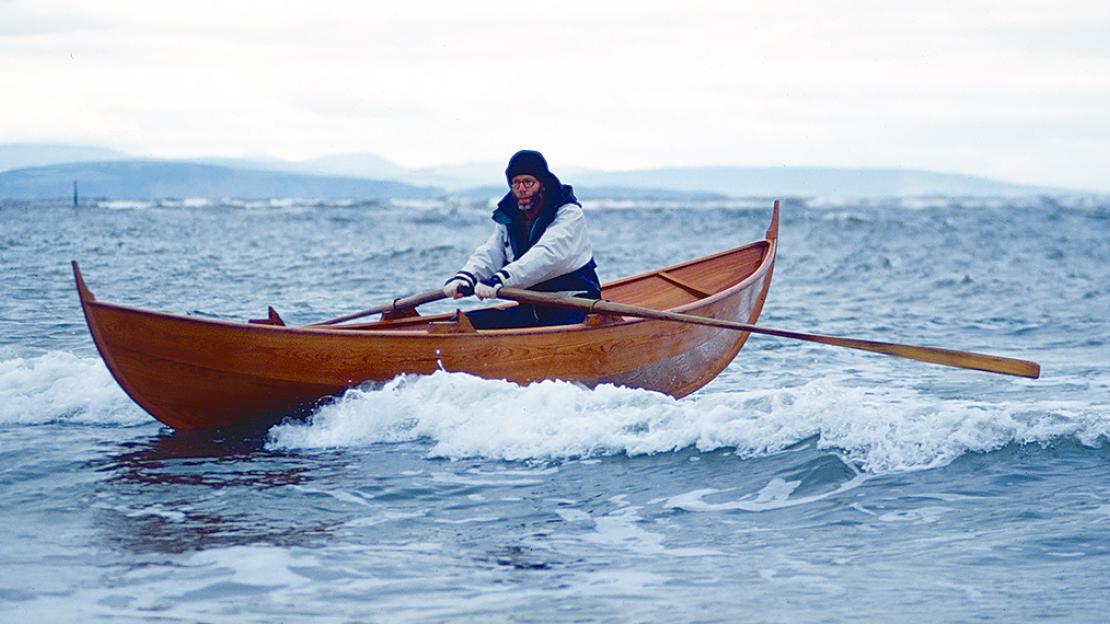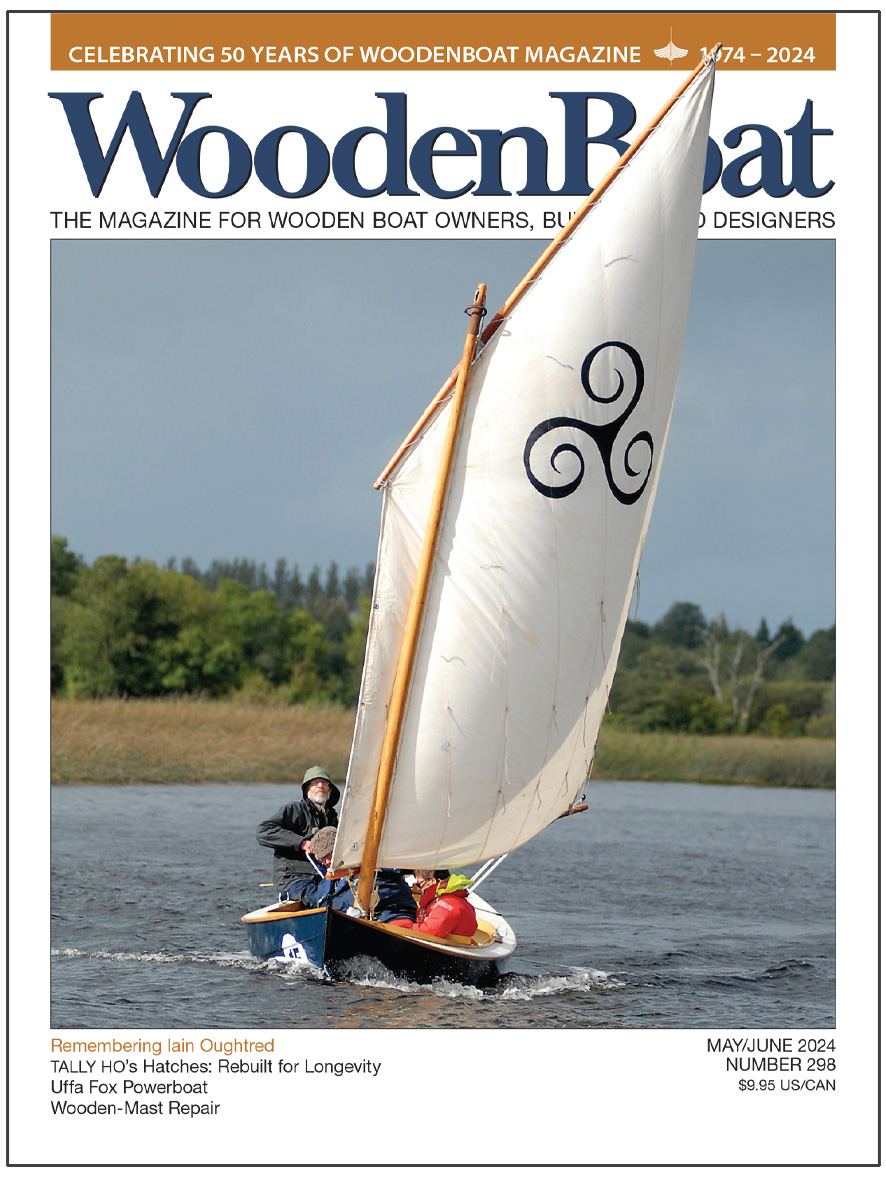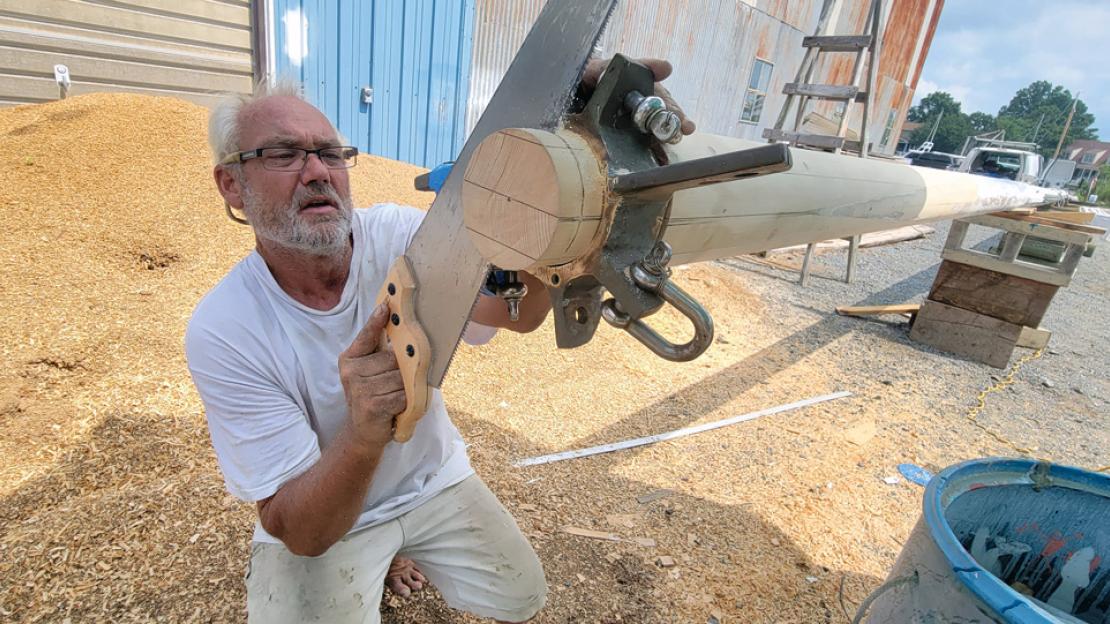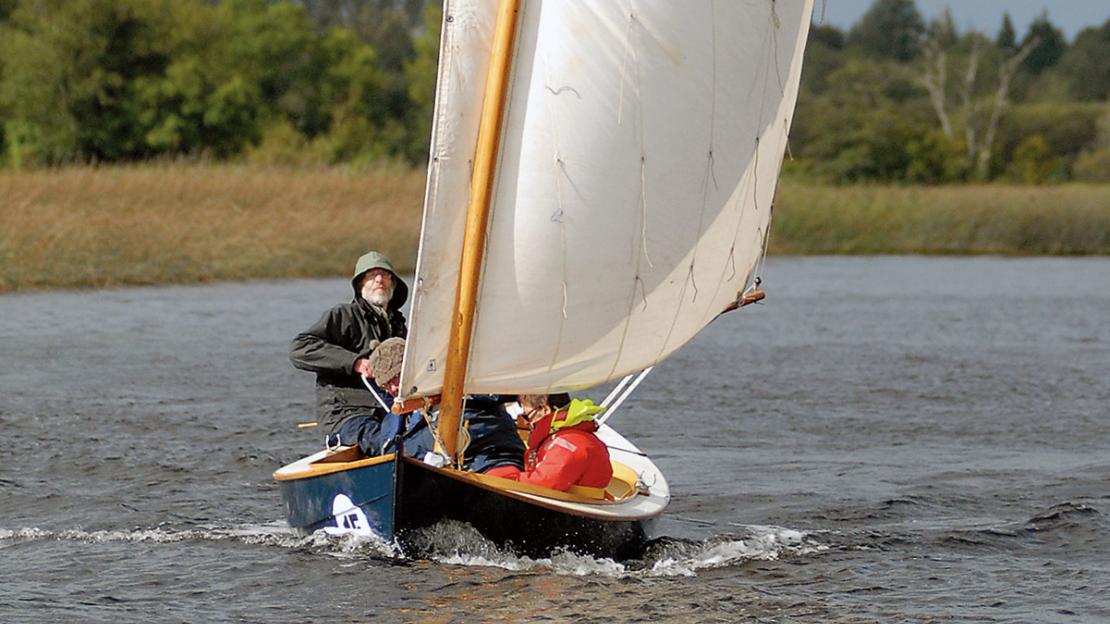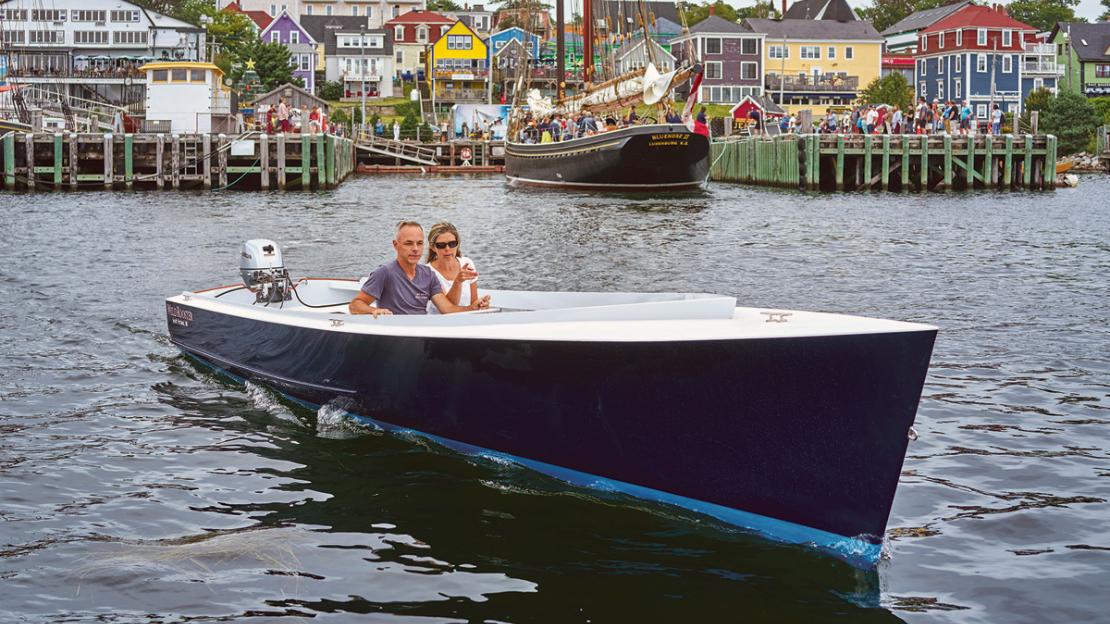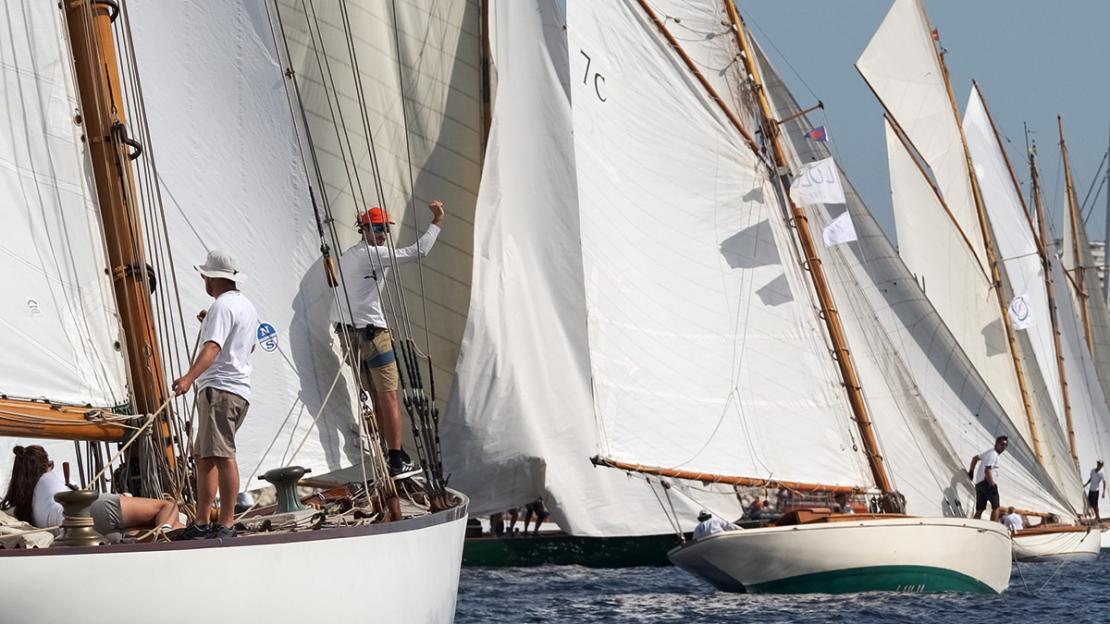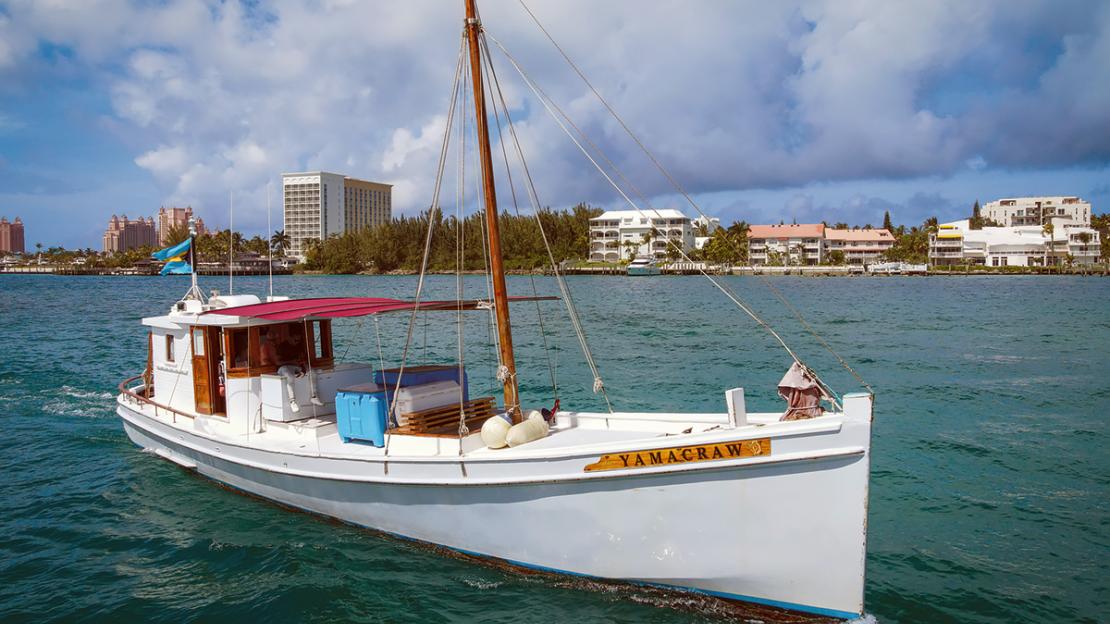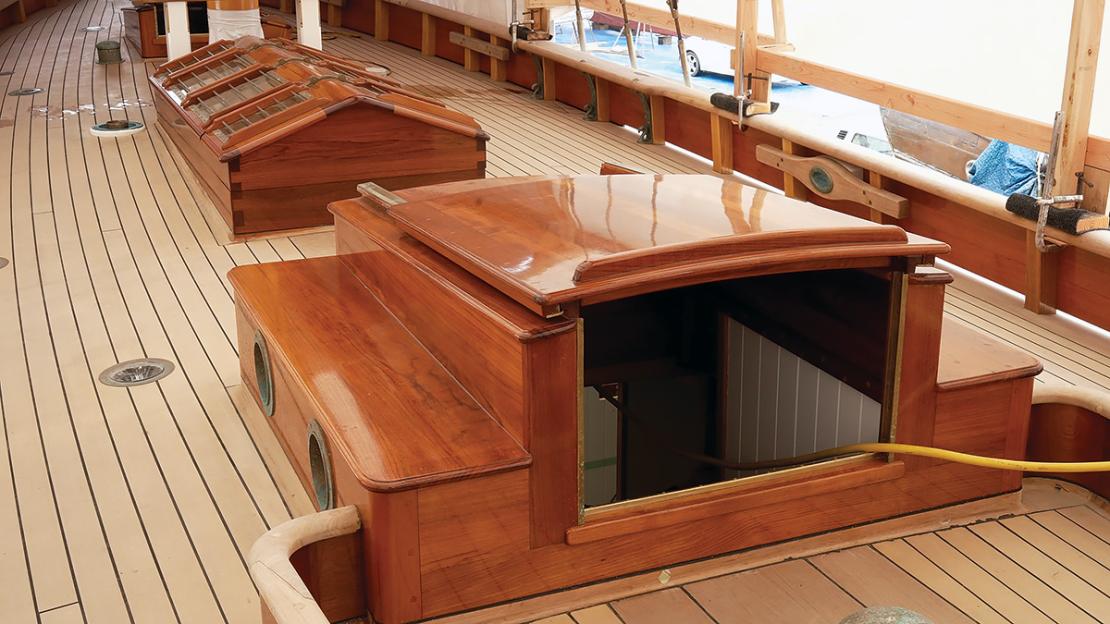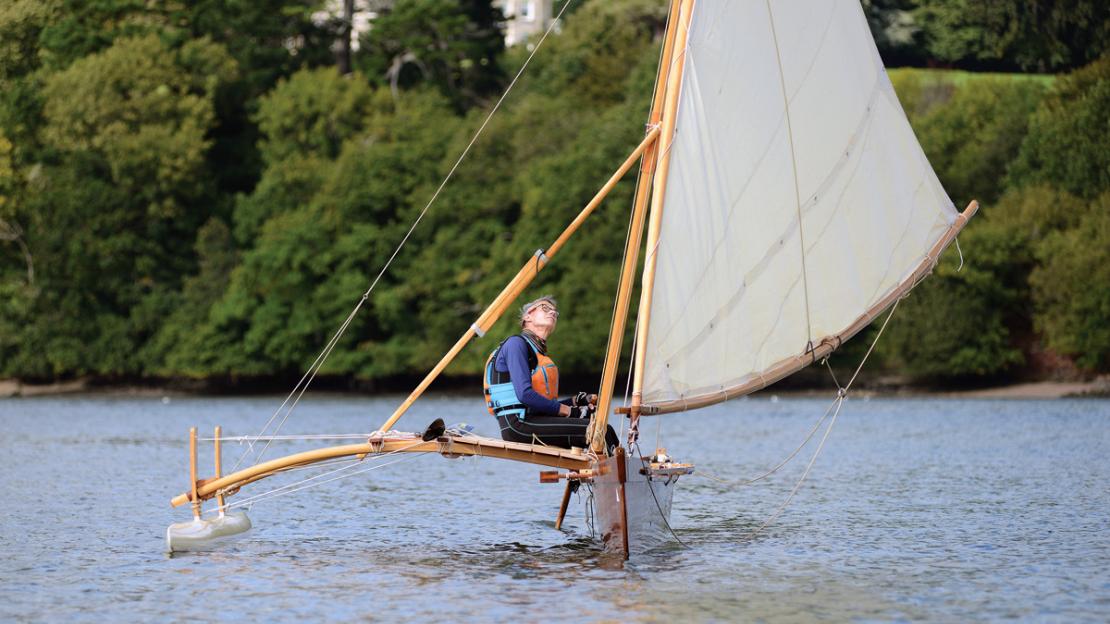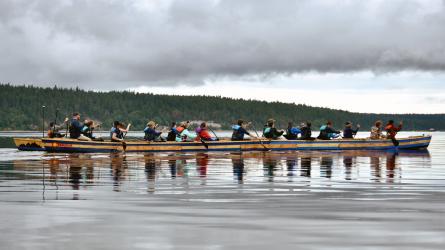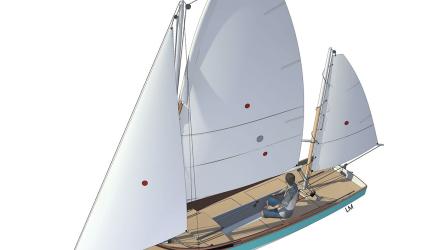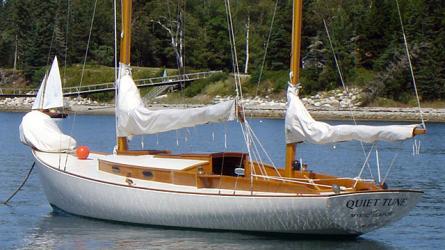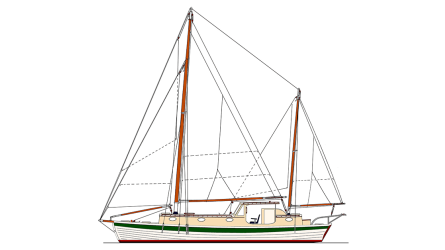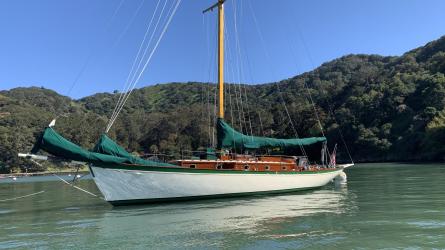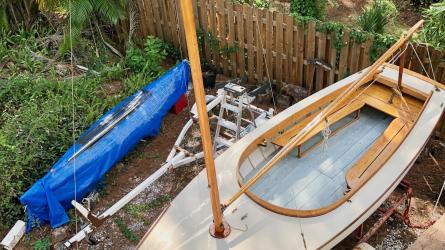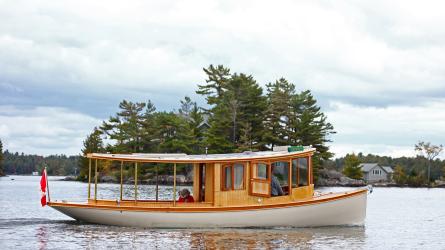Remembering Iain Oughtred
I first met Iain Oughtred through letters. One of my first assignments upon arrival at WoodenBoat Publications in early 1992 was to edit early elements of what would become his book, Clinker Plywood Boatbuilding Manual. My marked manuscript pages would be mailed off to a mythical-sounding place in Scotland; they would come back with copious and carefully handwritten drawings, comments, and discussion points about terminology and organization. It was a fantastic and memorable education and, though I didn’t know it at the time, a glimpse at rare genius.
Iain’s design career was blossoming then, and my view as an editor was expanding. My correspondence and travels in the ensuing years would kindle friendships with boatbuilders across North America and Northern Europe and in Russia, New Zealand, and Australia. If there was one constant among all those places, it was Iain Oughtred. I recall a just-launched Grey Seal at the tiny, remote riverport of Goolwa, in South Australia—not to mention a host of other Oughtred-designed boats at the biannual show hosted there. I recall the lightning-quick adoption of the St. Ayles Skiff by rowing groups worldwide, including in the British Isles, The Netherlands, the United States, Canada, Australia, South Africa, France, and New Zealand. And I recall the proliferation of camp-cruising Caledonia Yawls right here at the WoodenBoat School waterfront. Iain Oughtred, it seemed, was everywhere.
All of this energy, effort, and enthusiasm for Iain’s work did not grow out of a marketing plan and a venture-capital-backed corporation. It came from the vision of one man, working alone in ink and on paper—a “reclusive artist,” as Nic Compton calls him in his remembrance of Iain (see page 40), who died in February this year.
Iain had spent a summer at WoodenBoat a few years before I got to know him through letters. My colleagues at the time remembered his stay fondly: his gentle demeanor, his fearless shoulder-season outings in small boats, his intense study. That visit, that intense study, begat a yearlong series of articles commencing in WB No. 73 (November/December 1986) called “Small Boat Rigs Worth a Second Consideration.” It’s an impressive presentation, spanning all manner of rigs including lug, gunter, gaff, sprit, and Bermudan. It concludes with a treatise on exotic rigs ranging from sailboard sails to batwing canoes to lateen to trysail ketches.
Iain, you see, was a sailor first—a champion dinghy skipper in his native Australia. But he was not wedded to the overselling of advanced technology. Rather, he was committed to finding beauty, function, and even high-performance in utility. At the outset of his series on rigs, he wrote “…the development of racing boats, while fascinating in itself, has to a large extent conditioned non-racing sailors to a level of sophistication in sails and gear which often far exceeds what is really necessary.” Iain avoided rote acceptance of trends and found recreational utility in a tremendous range of beautiful vernacular boats. That was his genius.
It would be 18 or so years after my initial project with Iain that I finally met him in person, when he was celebrated at the WoodenBoat Show in Mystic, Connecticut, in 2010. He visited my family and me for a few days in Maine after that show, and our conversation ranged from boats to raspberry cultivation. Nic Compton wrote Iain’s life story in the book Iain Oughtred: A Life in Wooden Boats. Through the research for that book (including a visit to Iain’s humble, idyllic home in Scotland), Nic got a rare glimpse of the man and his work.

Editor of WoodenBoat Magazine
